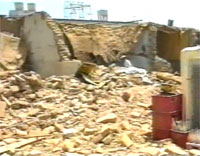UNESCO Director-General expresses sorrow following Chile earthquake and urges further strengthening of disaster risk reduction preparedness

- © UNESCO/P. Chiang-Joo
UNESCO Director-General Irina Bokova expressed her distress over the death and destruction caused by the powerful earthquake that struck Chile on Saturday 27 February. UNESCO stands ready, she said, to provide its expertise and support for the recovery effort. The Director-General also stressed the need for countries in high-risk areas to further strengthen disaster risk reduction capacity.
“The earthquake that struck Chile is another distressing example of our vulnerability to natural disasters and the need for greater vigilance and preparedness,” the Director-General said. “This is especially important for high-risk coastal communities, where there is little time for populations to receive any warning, as was sadly the case for those parts of Chile’s coastline that were close to the earthquake’s epicentre.”
“At the same time, I would like to acknowledge the rapid action of national authorities across the Pacific region. Their response to the regular and detailed alerts issued by the Pacific Tsunami Warning Centre showed that sound disaster risk reduction planning can be effective and that we must continue to reinforce efforts in this domain.”
The Pacific Tsunami Warning System, established by UNESCO’s Intergovernmental Oceanographic Commission in the mid 1960s following a similar event off the coast of Chile, began issuing regular warnings minutes after Saturday’s earthquake.
The System updated its bulletins hourly on the tsunami’s progress, based on sea-level data gathered in real time and relayed to the Pacific Tsunami Warning Centre in Hawaii and the Japanese Meteorological Agency. The bulletins informed national authorities and media of wave heights and expected times of arrival, allowing them to implement emergency planning procedures and evacuate coastal populations where necessary.
Since the deadly 2004 Indian Ocean tsunami, UNESCO has worked to update the Pacific warning system and extend it globally. The system now covers the Indian Ocean and is being developed in the Caribbean, Mediterranean and Northern Atlantic regions.
- Source:UNESCOPRESS
- 01-03-2010

